Pandora moths by the thousands are storming the pines of Central Oregon. Males beat their battered wings against the bark as they scale the trunk in a pheromone-driven search for lovely females unfolding their velvety wings like a sunrise.
Flying by in a whir of wings, they remind us of hummingbirds. Their striped bodies are thick and juicy. The bright gold feathery antennae of the males shine like liquid sun. When a male clasps his abdomen upon the female’s to mate on the bark, he holds on for dear life in a final act before death.

This brief phenomenon not to be repeated at this explosive level for another quarter century calls for our attention. We’re likely at the tail end of a several-year summer outbreak–or perhaps better named a pandemonium of pandoras. Drop all other plans. What better event for a date night? From midday on when the moths begin to fly until sunset, Wes and I stroll the pine forests. Like hunters zeroing in on prey, we stalk the moths. Usually, I seek only the red-gold older pines that emanate vanilla scents. Today, the younger dark-black pines are equally intriguing quarry.
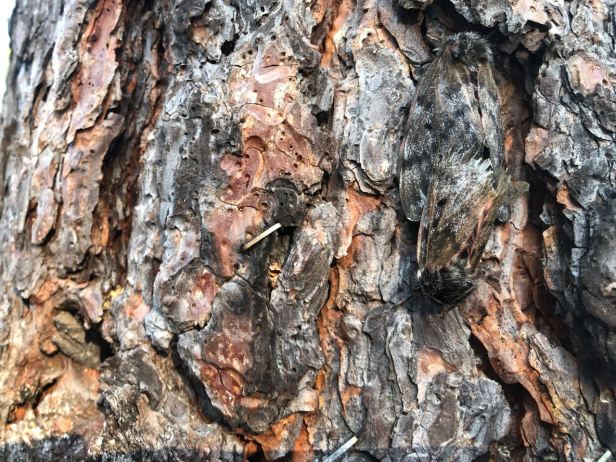
Some trees are bonanzas for the mating moths and the pearly egg clusters that females lay on bark or on twigs. We notice how similar the eggs look to the fluorescent green lichen patches–a clever way to hide in plain sight from predators.
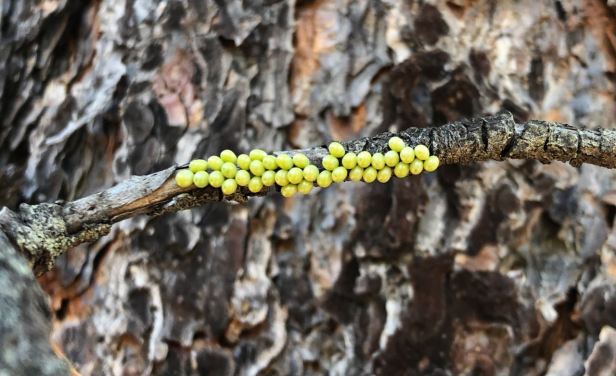
In our backyard, we find a bit of hanky panky going on in the pandora moth world. Right by our hammock rope tied to a pine, I spot a bizarre female with wings just emerging and a male already claiming his mate. Within a half hour, her wings are fully extended and stunningly lovely.
In another instance, an outlier moth suitor attempts to dislodge a male already clamped on to a female. As I watch, the linked couple tumble from the trunk three feet to the ground, but never let go. Slowly, they inch their way back onto the bark.
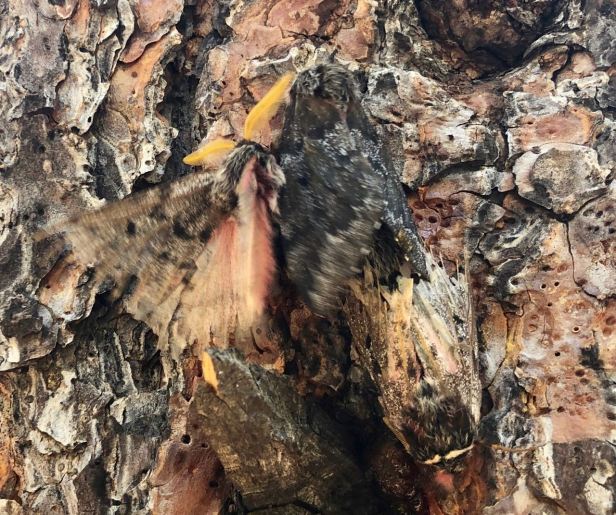
Pandora moths are as tied to the pines of Central Oregon’s lava soils as the trees themselves. The meteoric rise to this July’s jubilance of moths began two years ago, as part of a several year return. This year, the moths are wildly in our midst. Sadly, many lie dead below unnecessary bright lights of businesses in Bend–attracted to the artificial deadly blaze, and reminding me of the importance of passing a dark sky ordinance (see Lights Out Bend).
Their life cycle takes two years to reach adulthood. Back in 2017, moths laid eggs that would hatch 30 to 40 days later in August. The caterpillars crawled up the trees to feed in clusters on the needles of the end shoots of the most outer branches. They traveled in single file forming a long line in search of the next feeding spot. As they grew and shed skins for new, their patterns and colors changed. By fall, the caterpillars spread out and lived alone over winter, hiding at the base of needles and snug within strands of silk. On warm days, they’d venture out for a nibble.
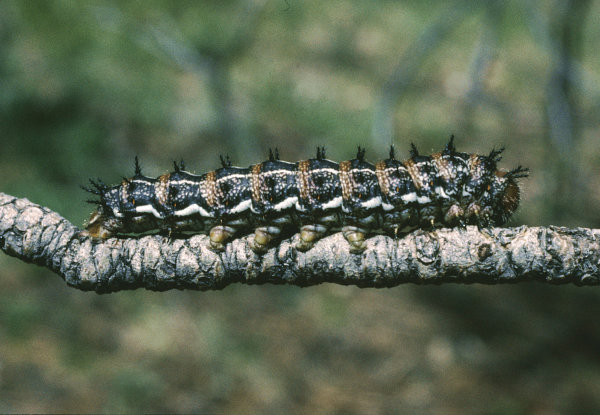
A year ago in spring of 2018, the voracious caterpillars munched needles (without harm to the buds) until they grew to be two or three inches long. They revealed their locations as greenish droppings and cast skins that fell to the ground. In July, the larvae crawled down the trunks to the ground and burrowed into the ideal loose pumice soils to enter that magical stage leading to winged metamorphosis.
The time of caterpillar descent to the ground marked a two week period when traditionally the northern Paiute and other tribes harvested the tasty larvae for nutritious meals. The surviving caterpillars that made it to the final stage of becoming pupae would remain underground until this summer of 2019. That’s when they emerged from the earth as winged beauties. Now, we indulge in a couple weeks of grandeur. The moths have only one task and that’s not to eat (no mouth parts!). It’s all about the mating game.
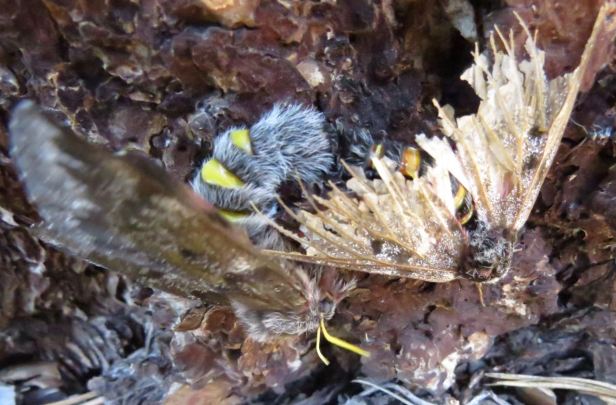
Why then, don’t we have regular events like this? Tree ring analyses of ancient ponderosas tell us that 22 pandora moth population explosions took place in the past 622 years. The moths are natural. They set back growth, but clearly the pines can live long in their presence. Nature has its way of reining in the moths. A natural virus will infect some larvae. Small mammals dig up the pupae in the ground. Birds feed on eggs and caterpillars. Parasitic wasps attack both eggs and larvae. Flammulated owls pluck the flying moths from the air at night.
For all who have the gift of living among the pandora moths, I suggest making a date with them right away–before they again vanish. Who knows what you might uncover as a naturalist sleuth? If you’re not among pandora moths, there are many other species to find and celebrate and you can even be a citizen science during National Moth Week— July 20-28.

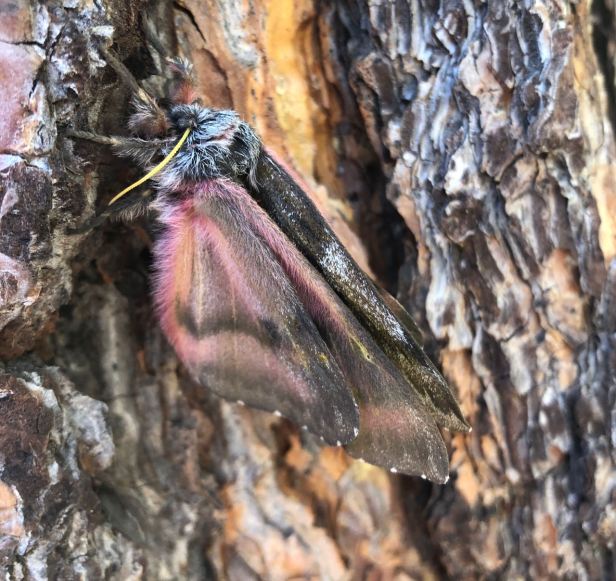
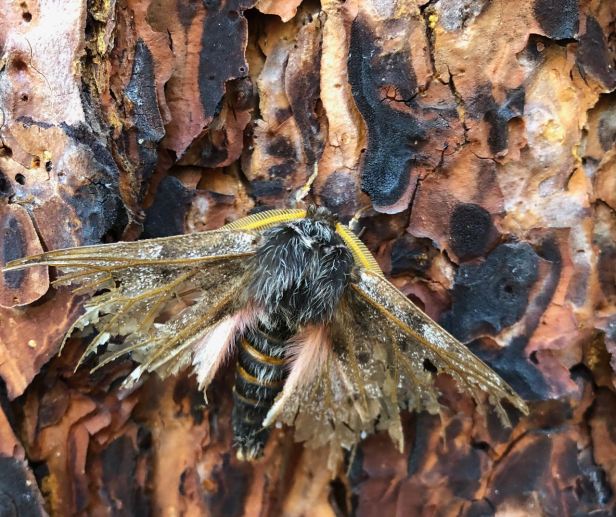
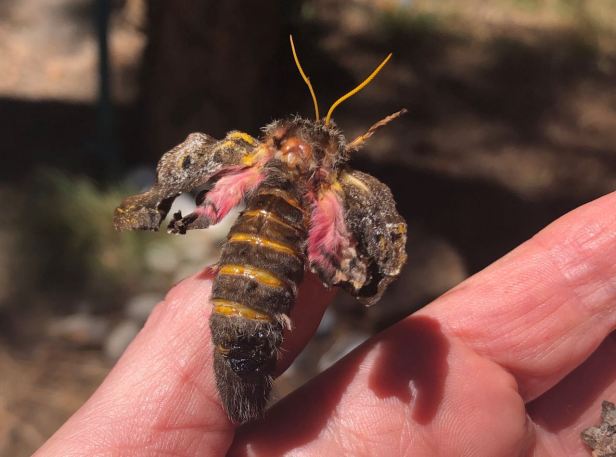
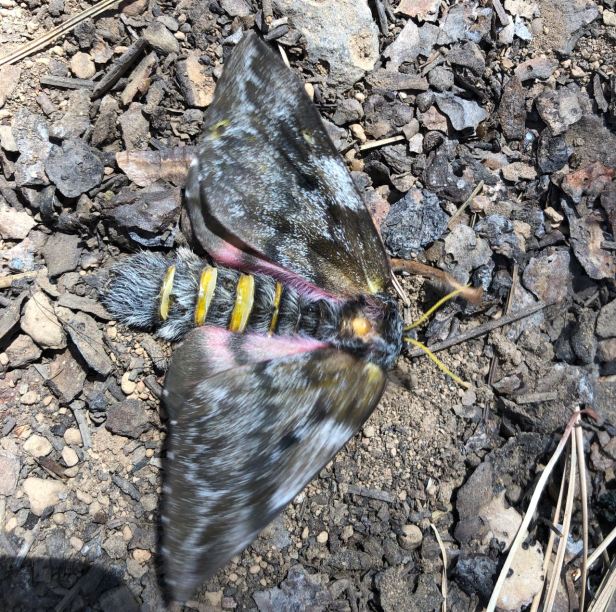
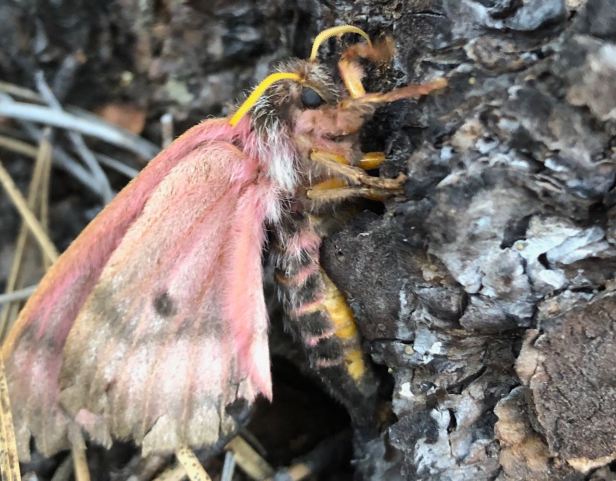

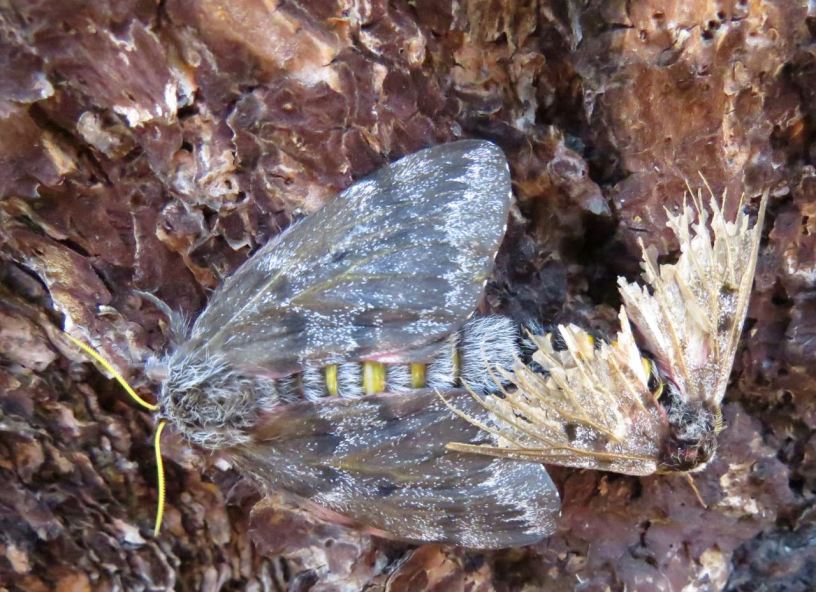


I learned something new. I may have seen them sometime along the way and paid them no mind. Thank you for introducing me.
LikeLiked by 1 person
Thanks Ken–I’ve sure learned a lot as well. Very intriguing and I realize how much you can learn from your own observations–definitely saw things that were not in any publications that I could find.
LikeLiked by 1 person
I just came in and posted some shots to facebook from a much simpler endeavor. Mallards and Wood Ducks out back on a cloudy summer evening.
LikeLiked by 1 person
Super interesting. Thanks
Jan Hodder 5412970664
>
LikeLiked by 1 person
Very well-written and informative article. Great photos, too.
LikeLike